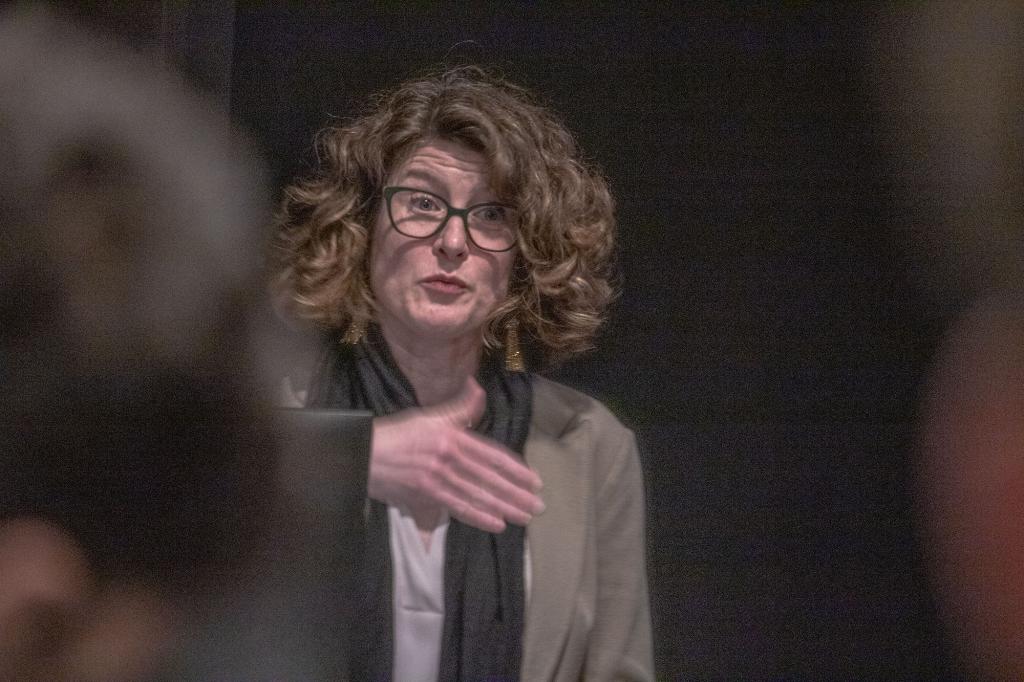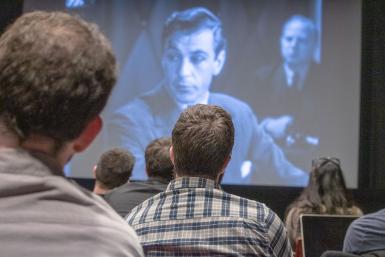Naremore lecture examines cinematic portrayal of thinking

Jennifer Fay, Vanderbilt University associate professor of film and IU alumna, has spent months thinking about thinking.
Her goal was to understand what the act of thinking looks like in the real world and in film.
“Cinema in multiple forms has something to tell us about the time and the experience of thinking,” Fay said Thursday evening.
To do this, she studied ideas and research from two philosophers and their findings on the act of thinking in two filmed trials: one real and one fictional.
Fay presented her findings during this year’s James Naremore Lecture, a Media School-sponsored series. She shared what she learned about thinking and its connection to film. Her talk, “What Cinema Calls Thinking: Arendt and Cavell on Trials,” used theories from Hannah Arendt and the philosophy of Stanley Cavell.

The James Naremore Lecture series honors James Naremore, chancellor’s professor emeritus in communication and culture, English and comparative literature.
Fay, BA’91, said it was an honor to give the Naremore Lecture because Naremore has greatly improved Fay’s and many others’ understanding of film.
“When you become a professor, you have a fantasty of what it’ll be like, and today is a fantasy day,” Fay said.
Fay’s research compared Arendt’s and Cavell’s findings and what that means for the act of thinking in cinema and real life.
Arendt finds a dark and terrifying humor in the real-life Eichmann trial, Fay said. Cavell, on the other hand, takes seriously a fictional romantic comedy trial.
First, Fay looked at Arendt’s views on the Eichmann trial and the invisibility of thought. Arendt studied the interactions and thinking of Adolf Eichmann, a major organizer of the Holocaust, during his highly publicized, televised 1960 trial.
Arendt noted Eichmann’s thoughtlessness and his repeated use of cliches, Fay said. This thoughtlessness, in a way, shielded him, and his continued use of “boys will boys”-type language echoed many totalitarian actions.
“For Arendt, thinking isn’t about knowledge. It’s about meaning,” Fay said.
Cavell, on the other hand, analyzed the cinematic portrayal of thinking in the 1936 film, “Mr. Deeds Goes To Town.”
Cavell looks at the main character, Mr. Deeds, and his relationship with thinking.
When it comes to the act of thinking and the way they appeared on trial, Eichmann was normal, and Deeds was abnormal, Fay said. But what Cavell argues for Deeds and what the camera reveals is serious enough.
“Cinema and photography did not alter the way we see the world,” she said.
There might not be such a huge difference between actors and people, Fay added. Actors are trying to be like people.
When we presume people are acting, we treat them as if they aren’t fully human being, Fay said. We physically aren’t capable of being in their presence.
“Cinema proves consciousness and existence when it records characters in thoughts,” Fay said.
Thinking is a present tense feeling, Fay said. Unlike longing, which is future, or judging, which is past, thinking happens right now.
“It is a very inhabited kind of now,” Fay said. “It’s right now what’s in front of me.”

